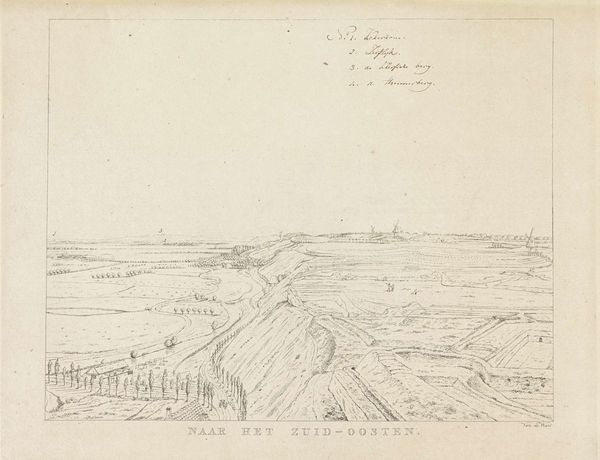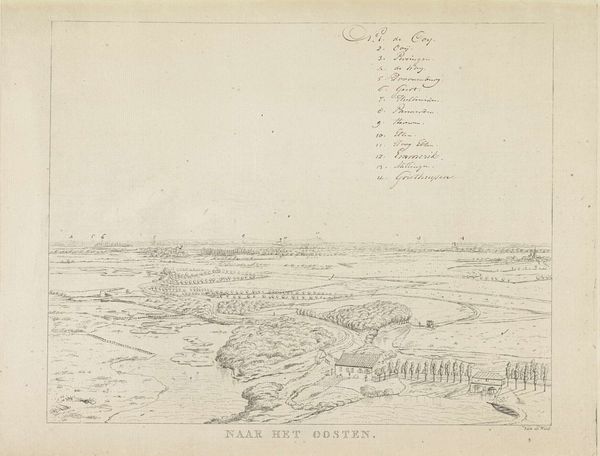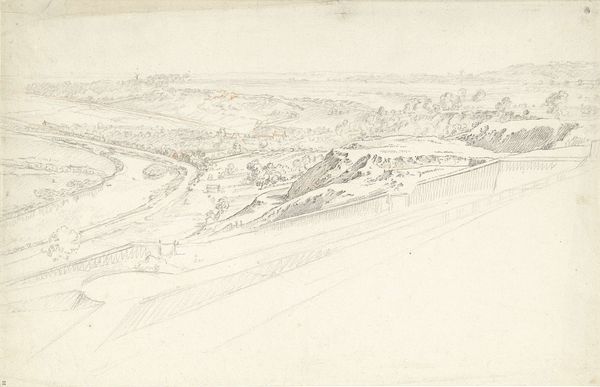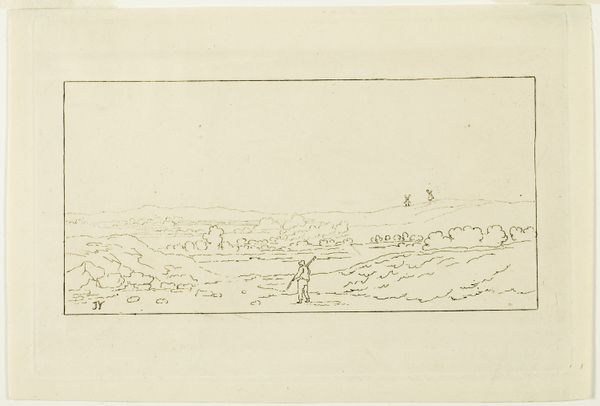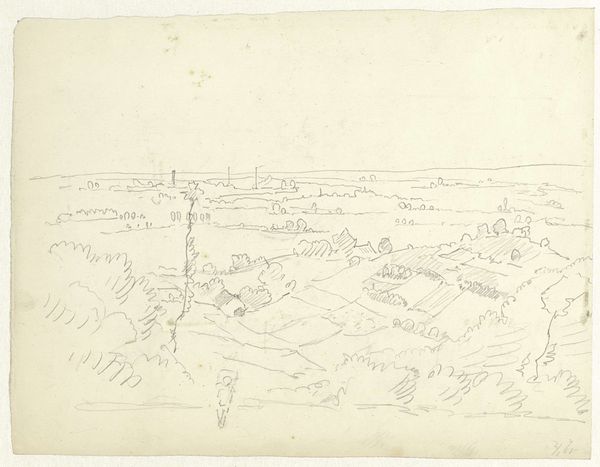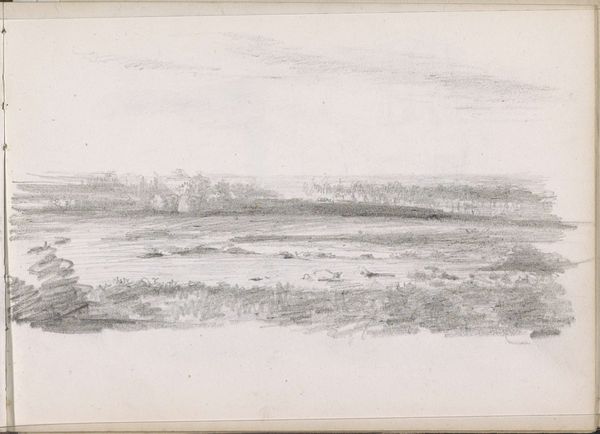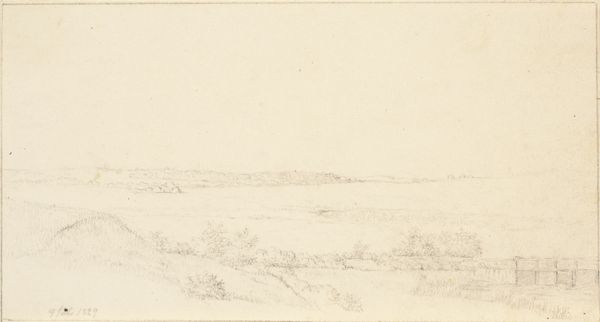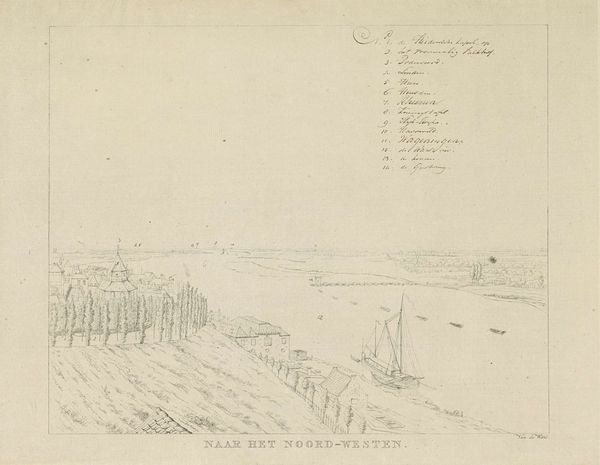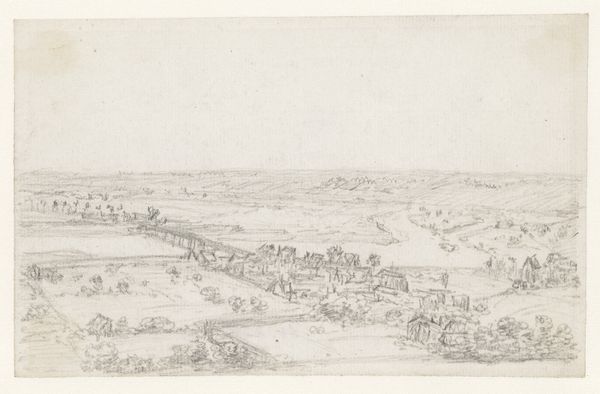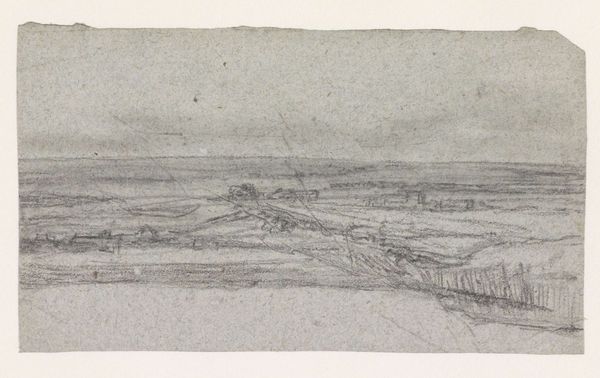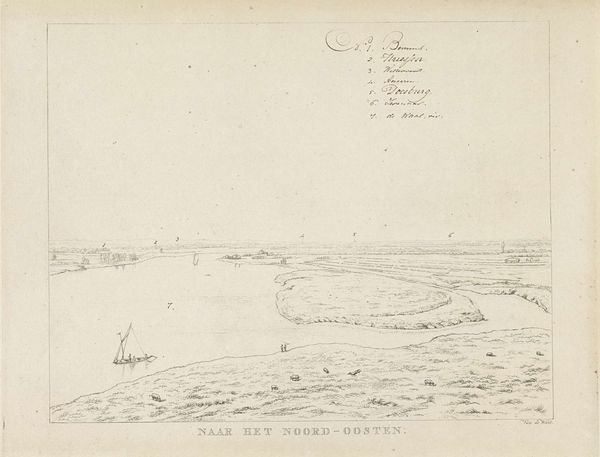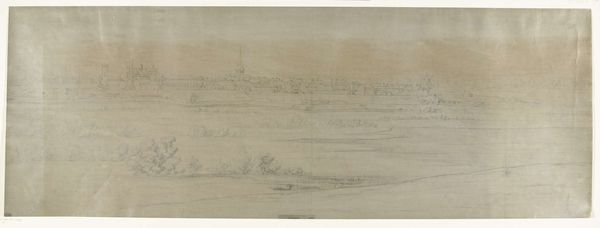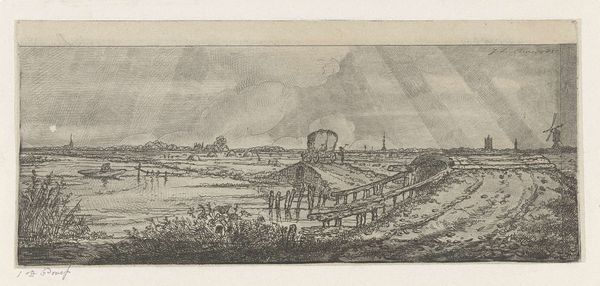
drawing, pencil
#
drawing
#
amateur sketch
#
light pencil work
#
pencil sketch
#
sketched
#
sketch book
#
landscape
#
personal sketchbook
#
idea generation sketch
#
sketchwork
#
geometric
#
romanticism
#
pencil
#
sketchbook drawing
#
initial sketch
Dimensions: height 303 mm, width 394 mm
Copyright: Rijks Museum: Open Domain
Curator: This work, crafted sometime between 1815 and 1824, is titled "Gezicht op het landschap ten zuiden van Nijmegen," or "View of the Landscape South of Nijmegen". It’s a pencil drawing by Derk Anthony van de Wart. Editor: Hmm, sparse and slightly melancholy, isn't it? A pale, wintry field fading into the distance, almost like a dream half-remembered. It feels intimate, like stumbling across a hidden page in someone’s journal. Curator: The interesting element, for me, resides in considering the sociopolitical landscape in the Netherlands during that period. The transition from Napoleonic rule was still fresh, impacting land use and resources and potentially individual agency, a mood which the light pencil work does convey. Editor: I get that. It's more of a quick impression though. I’m really drawn to the delicate quality of the lines; the sparseness emphasizes the sheer, unadorned hugeness of the land. Like an elegy or whisper across space and time. Curator: Precisely! That sparseness allows us to read into the scene, understanding how geometric constraints – think fencing or field divisions – affect populations and reinforce ownership of land. This piece hints at larger societal forces shaping rural existence and the economic dynamics impacting rural people. Editor: I hadn't considered those formal, geometric partitions in quite that way. To me it's almost primal, and less obviously class-conscious. It resonates more as a visual poem expressing solitude and awe in confrontation with boundless space. Do you see a lone figure on the lower left there? It brings it to human scale. Curator: Indeed, although it doesn't diminish the structural inequities during this transformational historical chapter. In effect, this landscape offers subtle perspectives into power imbalances affecting livelihoods in the aftermath of upheaval. Editor: Well, regardless, for me the appeal lies beyond that. The drawing has this haunting stillness, you know? A sort of lonely grandeur. The pencil strokes create this strange combination of vulnerability and something grand and permanent. It makes one long for quietude and reflection, regardless of socioeconomic positioning. Curator: An appropriate synthesis I think! Viewing the work then requires embracing these varying readings - considering the artwork's aesthetic allure without forgetting the important critical viewpoints about class and social stratification during that era. Editor: Exactly! I am pleased, ultimately, by how a few spare lines of pencil can invoke something so evocative and vast!
Comments
No comments
Be the first to comment and join the conversation on the ultimate creative platform.
